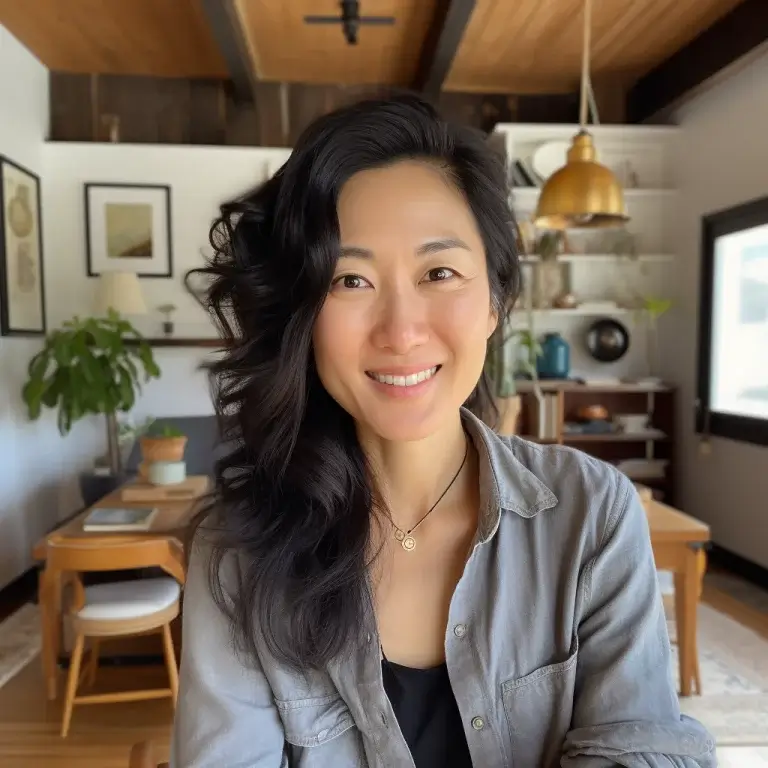Are you looking at homes with strange roof shapes that combine gable and hip designs? Many homeowners feel confused when they see these unique structures on houses.
A jerkinhead roof—also called a clipped gable—offers practical benefits that standard roof styles can’t match. These roofs resist wind better than regular gables while costing less than full hip roofs.
This guide will show you everything about jerkinhead roofs: their history, how they work, what they cost, and why they might be right for your home.
You’ll learn how to spot these roofs, understand their pros and cons, and see why they’re making a comeback in modern home designs.
Keep reading to find out if this smart roof style suits your next building project.
What Is a Jerkinhead Roof?
A jerkinhead roof blends gable and hip roof styles, with the top of the gable “clipped” or cut off at an angle.
These roofs have straight sides that slope upward, but the peak is flattened and angled inward.
Also known as clipped gable, hipped gable, or half-hip roof, these designs appear in many architectural styles.
They first gained notice in English cottages and German homes of the 1800s, offering both visual appeal and practical function.
The style marks many Arts and Crafts, Tudor, and cottage-style homes, showing both charm and smart design.
History and Evolution of Jerkinhead Roof
Jerkinhead roofs first took shape in northern European homes, where builders sought to fix problems with standard roofs.
The style was born from need rather than looks, with roots in German, English, and Dutch building methods.
- Tudor-era builders used the form to reduce wind damage during storms
- The style became popular in farm homes where roof stability was crucial
- Unlike purely fancy features, jerkinhead details served practical purposes
In Tudor homes of the 1500s, these roofs helped with both wind issues and space use. The style then spread to Gothic Revival buildings of the 1800s.
As people moved across the world, they took this roof style with them. You can spot these roofs in American towns with strong German roots, like those in Pennsylvania and the Midwest. By the early 1900s, the style became key in Arts and Crafts houses and bungalows, where function and form worked together.
Today, these roofs exist on homes across many regions, each with small changes to fit local weather, building methods, and style trends.
Jerkinhead Roof’s Common Uses and Applications
These five settings show where jerkinhead roofs shine in both form and function.
1. Cottage-Style Homes
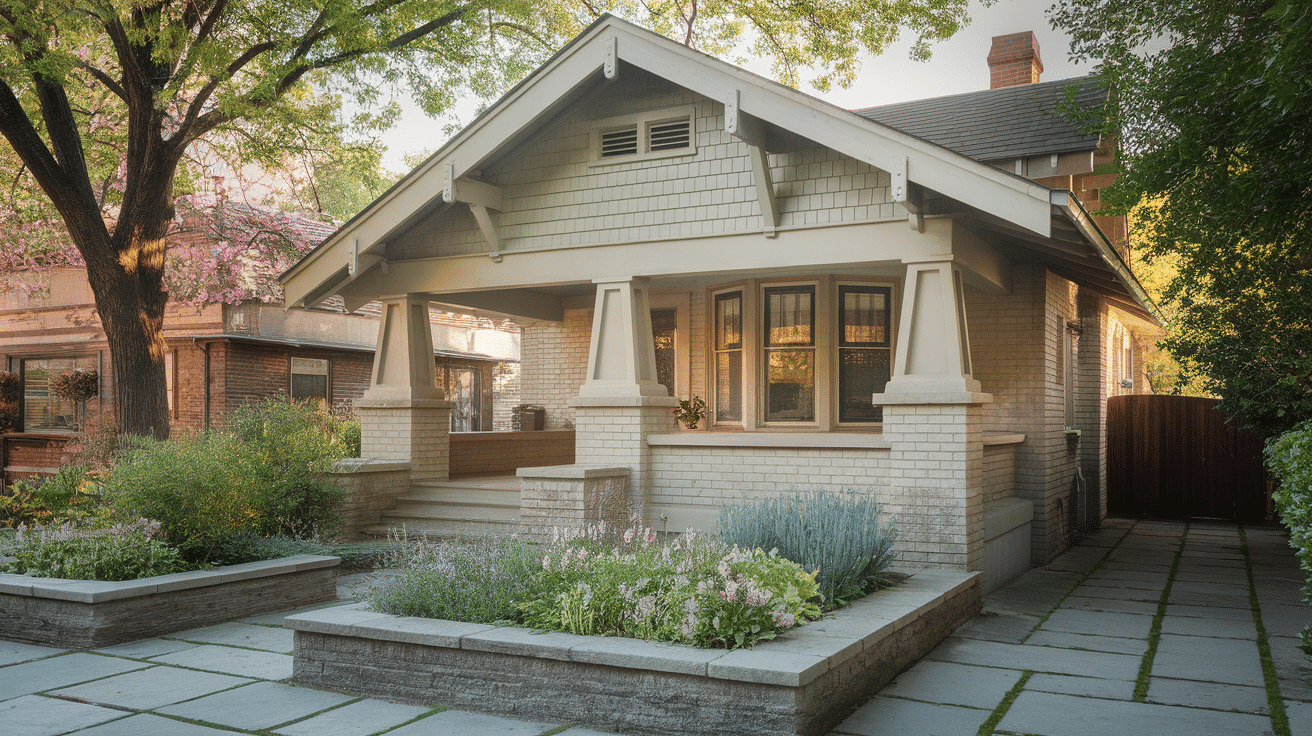
Cottage-style homes often feature jerkinhead roofs that complement their cozy appearance perfectly. These homes, built from the 1920s through the 1940s, use the roof style to keep their charm while standing up to the weather.
- Works well with small to medium footprints common in cottage designs
- Pairs with dormer windows to add light to upper floors
- Creates extra space in attics compared to full hip roofs
- Matches the low, grounded look that cottage styles aim for
Note: Many cottage-style homes with jerkinhead roofs include decorative wood trim where the clip meets the main roof section.
2. Craftsman Bungalows
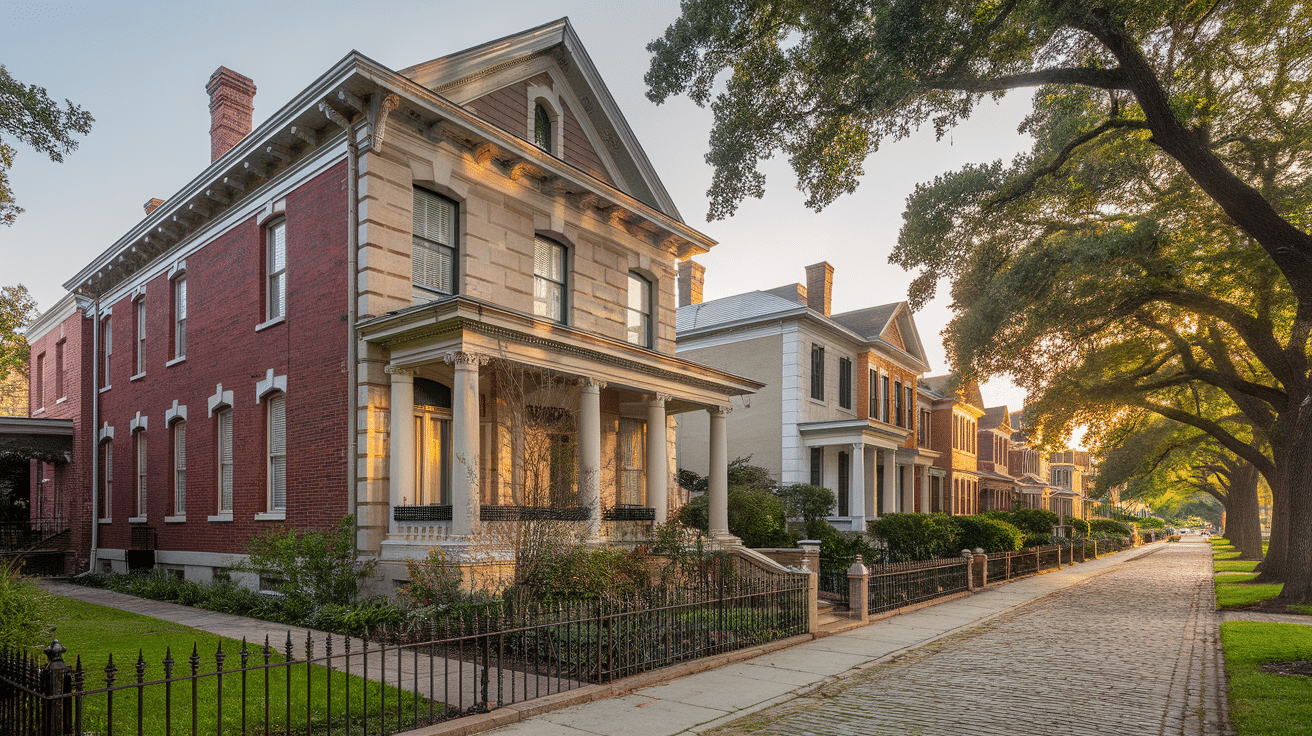
Craftsman bungalows from the early 1900s use jerkinhead roofs to show both style and function. These homes value honest materials and smart design, making this roof type a natural fit.
- Offers a distinct silhouette that stands out from plain gable roofs
- Reduces shingle or material waste compared to complex roof designs
- Provides better wind resistance than the typical bungalow gable roof
- Creates visual weight that helps ground the home’s appearance
Note: Look for wide overhangs on jerkinhead bungalows, which extend the roof’s protection and cast deeper shadows.
3. Tudor Revival Homes
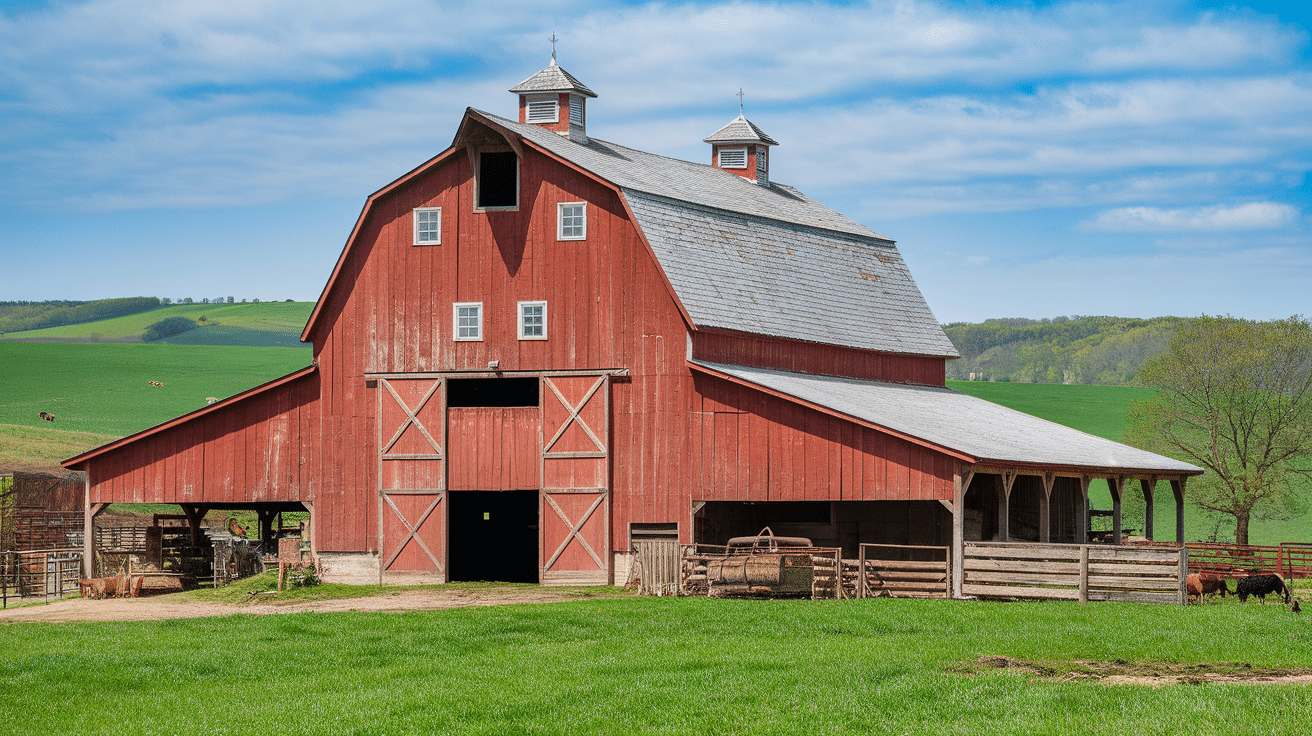
Tudor Revival homes of the 1920s and 1930s often feature jerkinhead roofs as part of their old-world look. These homes borrow from English homes of centuries past while adding modern touches.
- Works with the steep roof pitches common in Tudor styles
- Pairs well with the half-timber details on facades
- Helps shed snow and rain on these often complex roof lines
- Creates room for tall, narrow windows typical of the style
Note: Tudor jerkinhead roofs sometimes include rolled edges at eaves to mimic thatched roofs from old English cottages.
4. Farm Houses and Rural Buildings
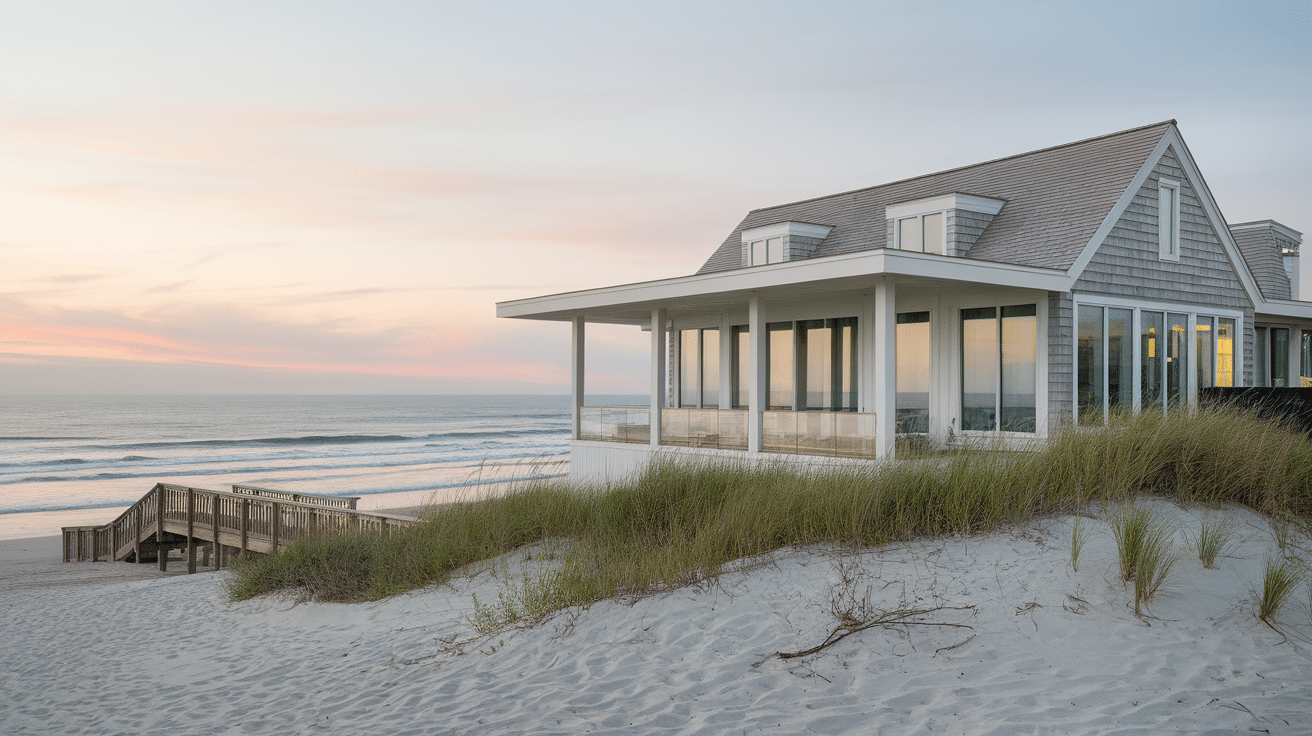
Farm houses and rural structures use jerkinhead roofs for their mix of looks and durability. In open areas where wind can be harsh, this roof style offers real benefits.
- Stands up to high winds better than standard gable designs
- Allows for simpler framing than full hip roofs
- Creates loft space for storage needs common in rural settings
- Forms a distinct shape visible from across fields
Note: Many rural jerkinhead roofs extend over porches, creating covered outdoor work areas protected from sun and rain.
5. Modern Interpretations
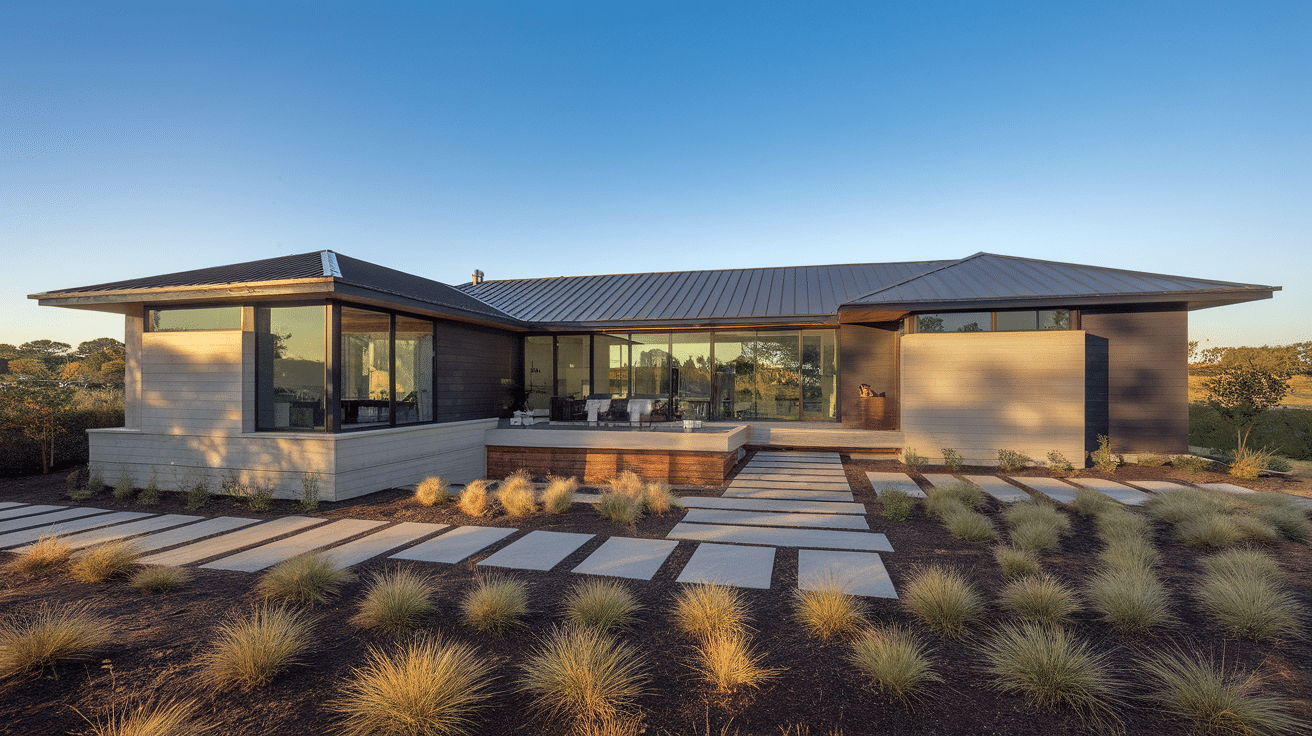
Modern homes sometimes use jerkinhead roofs to nod to the past while staying fresh. These newer versions keep the basic form but update materials and details.
- Works with current metal roofing for a clean, updated look
- Pairs with large glass walls for a contrast of old form and new function
- Helps with solar panel placement on the longer roof sections
- Creates visual interest on simple box-like home shapes
Note: Some modern jerkinhead roofs use the clipped section as a site for clerestory windows, bringing light into the home from above.
Advantages and Disadvantages: Jerkinhead Roof
| Aspect | Advantages | Disadvantages |
|---|---|---|
| Design Appeal | Adds visual interest and unique character to home exteriors | More complex design requires skilled builders |
| Wind Resistance | Better wind resistance than standard gable roofs | Complexity creates more potential leak points |
| Cost Factors | Less expensive than full hip roofs | Costs more than simple gable roof construction |
| Space Usage | Provides more usable attic space than hip roofs | Less attic space than full gable roofs |
| Structural Strength | Stronger in high winds and storms | Requires more framing materials and labor |
| Maintenance | Fewer issues with wind uplift over time | More valleys and joints need regular inspection |
| Construction | Creates a distinctive silhouette | Harder to frame correctly; longer build time |
| Resale Value | Can add character and curb appeal | May limit buyer pool in some markets |
| Weather Performance | Sheds snow and rain effectively | Complex drainage paths need proper guttering |
| Insulation | Can be well-insulated with proper techniques | More corners and joints create potential thermal gaps |
The right choice depends on your location, budget, and specific needs for your home.
Troubleshooting Common Jerkinhead Roof Issues
When your jerkinhead roof needs help, knowing what to look for saves time and money. Here are the main problems and their most effective solutions:
1. Leaks at Clipped Gable Junctions
Problem: Water often finds its way into homes where the hip section meets the gable. This happens because these spots have complex angles that challenge even good builders.
Solution: Add extra ice-and-water shield under the roofing in these areas, extending at least 18 inches up from all junction points.
2. Improper Flashing Installation
Problem: The many angles in a jerkinhead roof need correct metal flashing. When poorly installed, water gets behind the flashing and into your home.
Solution: Replace with step flashing that has proper overlaps (at least 2 inches) and is secured both to the roof deck and wall surfaces.
3. Sagging Ridgelines or Hips
Problem: Over time, the weight of the roof and poor framing can cause the ridge or hip sections to sag, creating low spots where water collects.
Solution: Install collar ties or ridge beams in the attic to support the structure and prevent further sagging.
4. Ice Damming in Cold Climates
Problem: The complex shapes of jerkinhead roofs make them prone to ice dams in winter, where ice builds up and forces water under shingles.
Solution: Improve attic insulation and ventilation to maintain a cold roof surface that prevents snow melt and refreezing at the edges.
5. Moss or Algae Buildup on Complex Slopes
Problem: The angles of jerkinhead roofs create shady spots where moss, algae, and lichen grow, holding moisture against the roof.
Solution: Install zinc or copper strips near the peak of the roof that will release metal ions when it rains, naturally preventing moss and algae growth.
Wrapping Up: The Value of Jerkinhead Roofs
Jerkinhead roofs offer a smart mix of looks and function for many home styles. They stand strong in bad weather while giving your house a special look that stands out.
Though they cost a bit more to build than simple roofs, their added strength and charm often make the extra cost worthwhile.
When built well and kept in good shape, these roofs can last for many years with fewer issues than some other styles.
If you’re building a new home or fixing up an old one, think about what a jerkinhead roof might add to your house. With their mix of old-world appeal and modern usefulness, these roofs remain a good choice for today’s homes.
Would a jerkinhead roof work for your next home project? The answer might well be yes.


